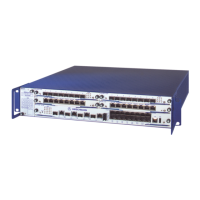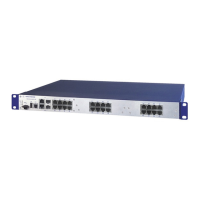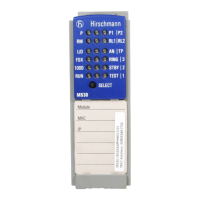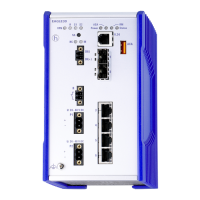Network load control
Basic - L3P
Release
4.0
11/07
8.4
QoS/Priority
21
Differentiated Services
The newly defined Differentiated Services field in the IP header in RFC
2474 (see fig. 39) - often known as the DiffServ Code Point or DSCP, re-
places the ToS field and is used to mark the individual packets with a
DSCP. Here the packets are divided into different quality classes. The first
three bits of the DSCP are used to divide the packets into classes. The
next three bits are used to further divide the classes on the basis of differ-
ent criteria. In contrast to the ToS byte, DiffServ uses six bits for the divi-
sion into classes. This results in up to 64 different service classes.
Figure 39: Differentiated Services field in the IP header
The different DSCP values get the Switch to employ a different forwarding
behavior, the Per-Hop Behavior (PHB). PHB classes:
X Class Selector (CS0-CS7): For reasons of compatibility to TOS/IP Pre-
cedence
X Expedited Forwarding (EF): Premium service. Reduced delay, jitter +
packet loss (RFC 2598)
X Assured Forwarding (AF): Provides a differentiated schema for han-
dling different data traffic (RFC 2597).
Bits (0-2): IP Precedence Defined Bits (3-6): Type of Service Defined Bit (7)
111 - Network Control 0000 - [all normal] 0 - Must be zero
110 - Internetwork Control 1000 - [minimize delay]
101 - CRITIC / ECP 0100 - [maximize throughput]
100 - Flash Override 0010 - [maximize reliability]
011 - Flash 0001 - [minimize monetary cost]
010 - Immediate
001 - Priority
000 - Routine
Table 11: ToS field in the IP header
Bits
0
1324567
Currently
Unused
(CU)
Differentiated Services Codepoint
(DSCP) RFC 2474
Class Selector
Codepoints
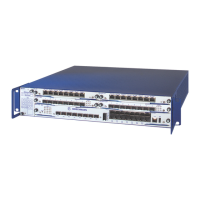
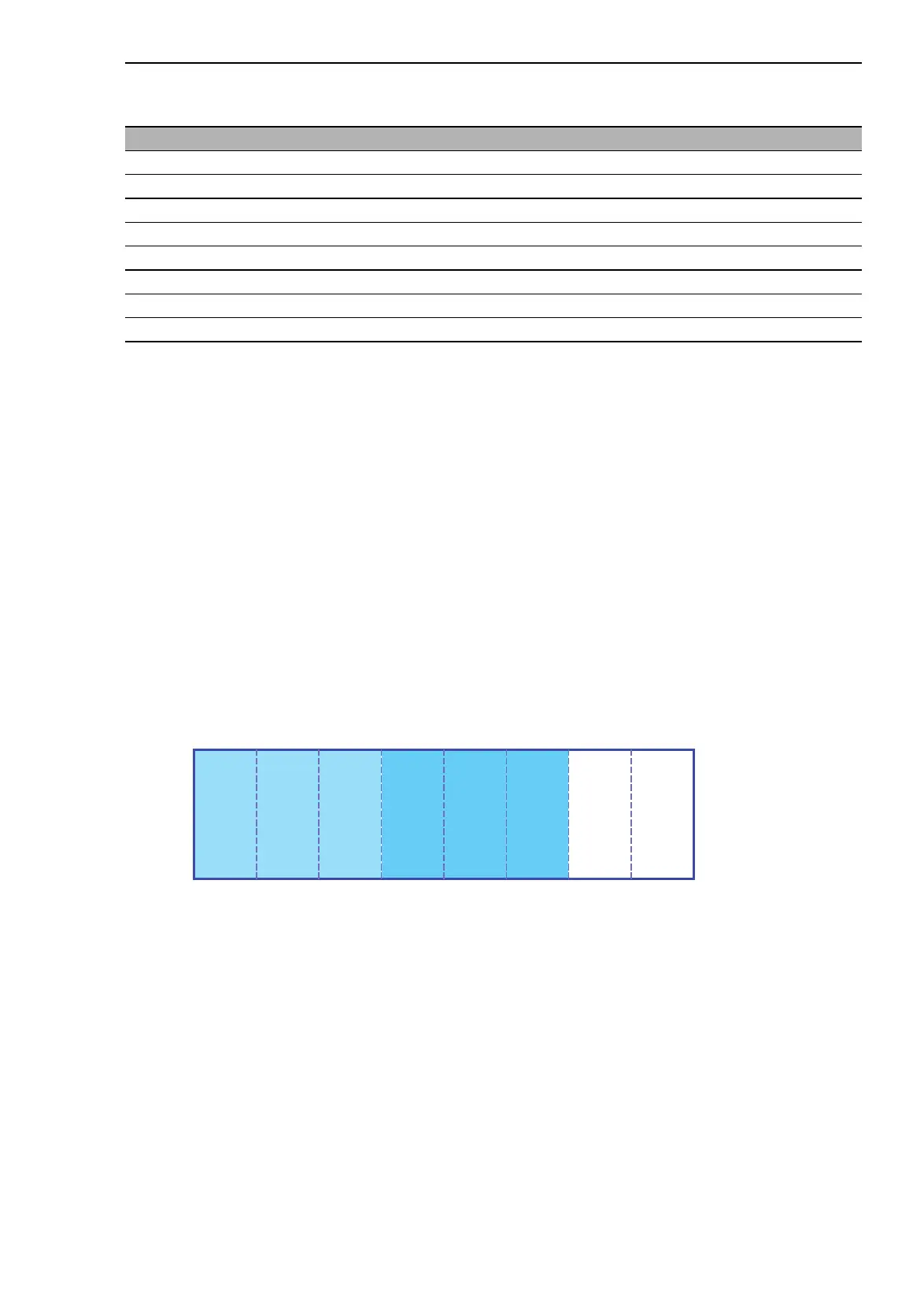